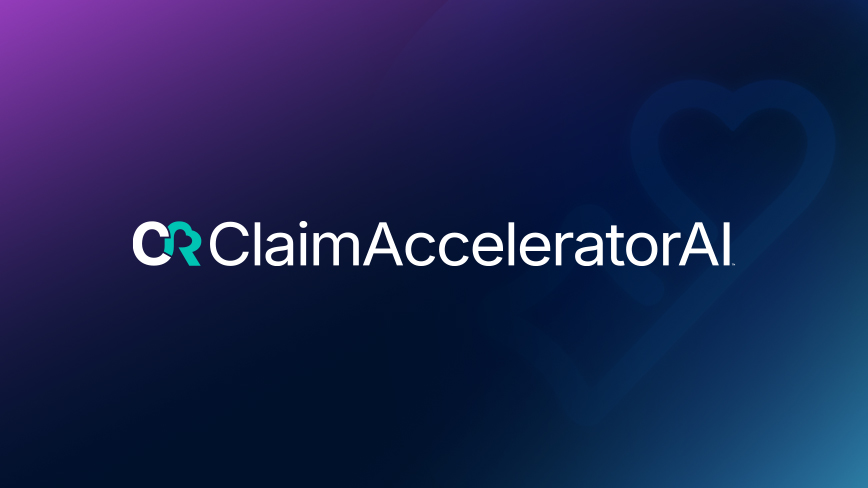As AI becomes a routine part of ABA workflows, tools like AI-assisted session note drafting are proving to be highly valuable in saving time and reducing administrative workloads. These tools allow behavior technicians and analysts to focus more on client care and less on documentation.
“AI provides us the opportunity to really shift how we design our workflows, how we train staff, and potentially support clinical care over time.”

Manager of Clinical AI Governance
CentralReach
Still, the role of the clinician remains essential. AI can assist, but it can’t think like a clinician. It’s up to providers to guide the process, ensuring that clinical integrity remains intact.
Learn how to harness AI to drive efficiency, innovation, and better outcomes.
The Risk of Hands-Off Use of AI
Clinicians have a critical responsibility in ensuring the ethical use of AI. As Haley Scheer, MA, BCBA, LBA (WA), Clinical AI Solutions Specialist at CentralReach, explained in a recent webinar
“It [AI] is not a clinician. It will never be a clinician. Its purpose is to transform input into a structured narrative, but it does not and should never be providing that clinical judgment.”

Clinical AI Solutions Specialist
CentralReach
Preserving clinical judgment is vital when using any AI support. AI is a tool for clinicians to utilize, not a replacement for clinicians.
Using AI for clinical documentation without clinician oversight carries many clinical and ethical risks. With any AI tool, there is the potential for error or “AI hallucinations,” which can result in misleading or inaccurate information. Relying on AI output without verification from the clinician is not ethically sound. Doing so would undermine the professional responsibility to ensure accuracy, context, and appropriateness of one’s clinical documentation. Additionally, overreliance on AI support may reduce clinical decision-making ability over time.
- Without proper oversight, documentation may fail to meet organizational or payor requirements. Documentation that fails to meet payor requirements exposes the risk of non-compliance, which may result in audits, denials, fund recoupments, and even the potential loss of contracts.
“The provider is ultimately responsible for layering in that critical session-specific context, reviewing, and ensuring approval before they finalize and sign off.” –Haley Scheer, MA, BCBA, LBA (WA), Clinical AI Solutions Specialist at CentralReach
AI as a Co-Pilot, Not the Clinician
When used thoughtfully, AI holds great potential to improve efficiency and simplify workflows. However, the key is using AI tools as a co-pilot, alongside your clinical judgment. They should never serve as a substitute for provider expertise. Visibility, transparency, and oversight are essential.
Responsible use of AI in clinical documentation starts with establishing clear boundaries. AI can help organize data, streamline language, and draft session narratives. However, it can’t observe behavior or determine what is clinically relevant. Those responsibilities fall on the provider who rendered the services.
To maintain clinical integrity while using AI tools for documentation, clinicians should:
- Understand the inputs: The quality of an AI-generated session note is only as good as the data entered into it. As Haley Scheer highlighted, “The input directly informs the output.” To enable quality AI-supported documentation, clinicians should understand how the data they input influences the output
- Review and revise: AI-drafted session notes are intended to serve as a draft for further refinement. Clinicians must review and revise the note before approving and signing off on it
- Add session-specific context: AI-generated session summaries may not capture all important session details. When reviewing the draft, be sure to include any relevant session details necessary to provide a complete picture of the session. Keep in mind that any information not captured in the input will not be reflected in the draft. Clinicians may want to add details not captured in the data, such as a short anecdote or an observation about their client.
Structuring Session Note Templates: The Input Matters
AI-powered session note generators are designed to rely exclusively on the context they are given through session data via curated templates. “AI can only generate narratives based on the input it’s provided with,” explained Haley Scheer. “It doesn’t know what wasn’t entered. It wasn’t there in the session.” AI isn’t a clinician and can’t make judgments about the inputs it receives. Because of this, practices must ensure high-quality, intentional inputs designed to capture key elements of the session.
“Inputs” refer to a few different things, including:
- The session note template: This is the foundation. A structured, customized session note template is important for standardizing documentation. With a company and payor-specific standardized template, the AI tool is more likely to generate a quality summary that covers the required elements with clarity.
- Provider input: The information the clinician inputs into the session note fields must be objective, clear, and concise.
- Raw session data: AI tools use the behavior and skill acquisition data recorded during the session to anchor the narrative with measurable outcomes.
If any of these inputs are inconsistent, incomplete, or unclear, the quality of the session narrative may suffer. To better understand industry best practices for note templates that will improve the quality of AI-generated session note summaries, watch our on-demand webinar, Partnering with AI: Best Practices for Integrating Generative AI into Clinical Documentation.
“High-quality inputs lead to high-quality session narratives.” —Haley Scheer, MA, BCBA, LBA (WA), Clinical AI Solutions Specialist at CentralReach
The Future of AI in ABA Depends on Sound Clinical Judgment
It’s natural to feel some hesitancy about adopting AI workflows in healthcare. A balanced approach to implementing these tools is key. The future of AI in ABA isn’t about replacing clinicians. Rather, it’s about streamlining administrative responsibilities to allow providers to use their expertise where it matters most. When AI is used responsibly, as a co-pilot rather than the driver, clinicians can experience the benefits of efficient workflows without compromising clinical integrity.
Discover strategies for partnering with AI to boost efficiency and impact
Posted in AI, Clinical, Practice Management
You may also like...
Related information and stories
Harness AI Technology for Efficient ABA Billing, Accurate Claims Auditing & Payor Compliance
See how ABA providers like PediaPlex are transforming billing with AI Navigating the complexities of billing as an ABA provider is no easy feat. Errors in CPT code usage, missing…
Continue ReadingRedefining Documentation: How BASS Improved Session Note Workflows with AI
With AI summaries built into their EMR, clinicians spend less time typing and more time treating BASS ABA Therapy, a dedicated provider of best in class ABA services across Florida…
Continue ReadingLeveraging AI for Note Generation To Manage the Complexities of ABA Session Notes Compliance & Audits
Insufficient supporting documentation is one of the most common reasons for failing a healthcare payor audit. Despite the high risks associated with a failed audit, many providers struggle to navigate…
Continue Reading






